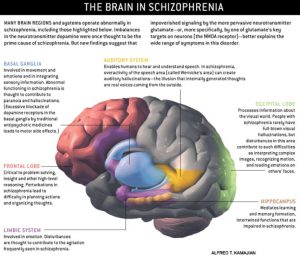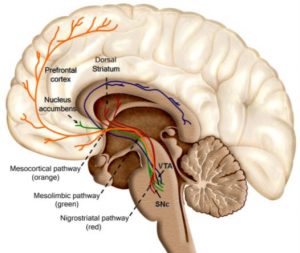Ella and Olivia’s Health: Schizophrenia
Olivia’s Diagnosis
Olivia was diagnosed with Schizophrenia. Schizophrenia is classified as a psychotic disorder, in which a person goes into an abnormal state of consciousness. The higher functions of the mind are disrupted. Some combination of a person’s perceptions, thought processes, beliefs, and emotions become disconnected from reality. Symptoms may come and go.
Positive Symptoms of Schizophrenia
Positive symptoms are those that are present in someone with schizophrenia that someone without schizophrenia or another mental health condition would not experience.
Delusions:
- False beliefs that don’t make sense in context to a person’s culture. Obsessive quality.
Hallucinations:
- False sensory experiences that have no basis in the external world. Fully awake and not under the influence of alcohol or drugs. (auditory, visual, tactile).
Disorganized speech:
- Words are linked together based on sound, rhyme, puns, or free association.
Disorganized behaviour:
- Not goal-directed. Laughing inappropriately. Adopting strange postures or freezing (catatonic behaviours).
Negative Symptoms of Schizophrenia
The person is experiencing an absence or reduction of certain traits that are often present in healthier individuals. Feels like something is being taken away or disappearing.
- Flattened affect
- Anhedonia
- Reduced speech
- Lack of initiative
Cognitive Symptoms of Schizophrenia
Cognitive symptoms are not used to diagnose schizophrenia.
- Difficulty maintaining attention
- Memory problems
- Difficulty planning and structuring activities
- Lack of insight
Dopaminergic Pathways: Outline
- Mesolimbic pathway (positive symptoms)
- Mesocortical pathway (negative symptoms)
- Nigrostriatal pathway (extrapyramidal symptoms & tardive dyskinesia)
- Tuberoinfundibular pathway (hyperprolactinemia)
Treatment and Self Help
Tip 1: Get involved in treatment & self-help
- Accept your diagnosis
- Don’t buy into the stigma of schizophrenia
- Communicate with your doctor
- Pursue self-help & therapy that helps you manage your symptoms
- Set and work towards the goal
Tip 2: Get active
- Aim for 30 minutes per day
- Rhythmic exercise that uses both arms and legs
- Focus on how your body feels as you move
Tip 3: Seek fact-to-face support
- Turn to trusted friends & family
- Stay involved with others
- Meet new people
- Find a supportive living environment
- Take advantage of support services
Tip 4: Manage Stress
- Know your limits
- Use relaxation techniques
- Manage your emotions
Tip 5: Take care of yourself
- Get plenty of sleep
- Avoid alcohol & drugs
- Eat healthy, balanced diet
Tip 6: Understand the role of medication
- Medication is not a cure
- Only treats some of the symptoms
- Don’t put up with disabling side effects



